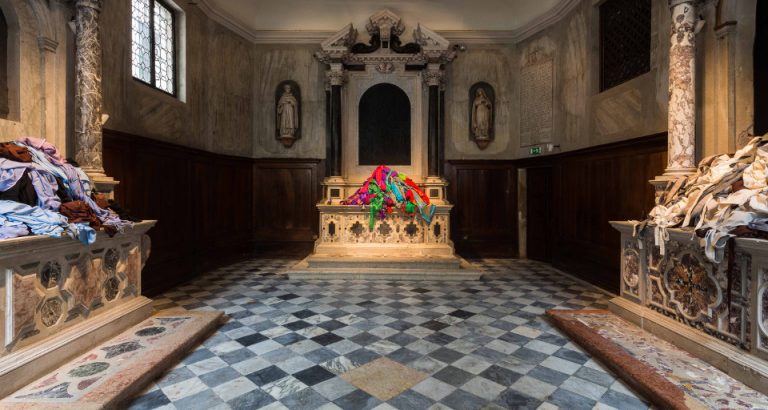
Curator’s Corner: René Barilleaux Visits the Venice Biennale
This past July I had the extreme pleasure of traveling to Venice, Italy, to attend the 56th biennale exhibition. Commonly known as the Venice Biennale, this major international exhibition is presented every other year.
This global presentation includes works by artists from all over the world, many with little presence in the United States. Particularly interesting this year were works by artists from Africa, Asia, and South America.

As part of the biennale, several exhibitions are installed in historic spaces–splendid churches, private palazzos. During the biennale, you get access to amazing architectural spaces that you normally would not get to see. Plus, (sometimes) wonderful contemporary works of art are layered within these historic settings. It is always the most beautiful when those things come together—the old and the new.
Two things were very evident throughout the biennale this year: video and drawing, especially small-scale works. While so much of contemporary art is about making works of large scale, here there was a lot of intimate drawings made with a wide range of materials–graphite, ink, paint. I was also intrigued by the subject matter of much of the work–very dark, political, socially consciousness, accusatory–a lot of fingers being pointed.
For example, I saw a provocative installation in a small chapel about groups of women from around the world who have been victimized. The chapel’s three altars were each covered with clothing from these women in a sort of sacrificial tableau.

As the McNay’s Chief Curator, attending exhibitions such as the biennale is a way for me to keep current with what is created around the world. It also helps me to think about directions in which to move, issues to address, and potential exhibitions and acquisitions.
By keeping our finger on the pulse of the art world, we can make your experiences here at the McNay so much richer. And if you find yourself in Italy this fall, check out the Venice Biennale, on view through November 22.









